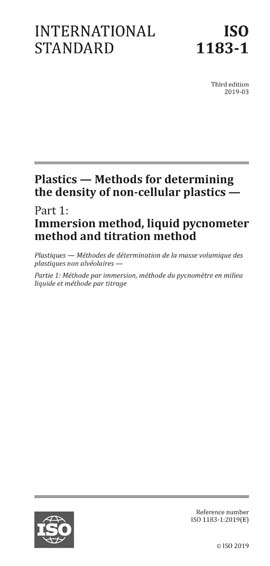Most recent
ISO 1183-1:2019
Plastics - Methods for determining the density of non-cellular plastics - Part 1: Immersion method, liquid pycnometer method and titration method
This document specifies three methods for the determination of the density of non-cellular plastics in the form of void-free moulded or extruded objects, as well as powders, flakes and granules.
— Method A: Immersion method, for solid plastics (except for powders) in void-free form.
— Method B: Liquid pycnometer method, for particles, powders, flakes, granules or small pieces of finished parts.
— Method C: Titration method, for plastics in any void-free form.
NOTE Density is frequently used to follow variations in physical structure or composition of plastic materials. Density can also be useful in assessing the uniformity of samples or specimens. Often, the density of plastic materials depend upon the choice of specimen preparation method. When this is the case, precise details of the specimen preparation method are intended to be included in the appropriate material specification. This note is applicable to all three methods.
Content Provider
International Organization for Standardization [iso]






